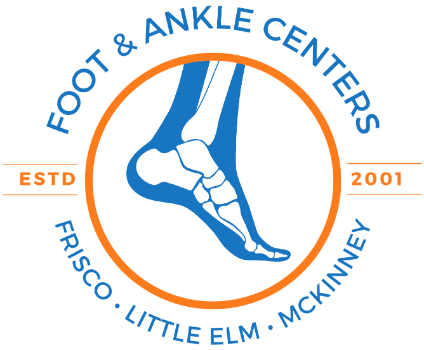Bunion Pain Treatment Options at Foot & Ankle Centers
Saturday, May 31, 2025 | By: Foot & Ankle Centers of Frisco and Plano
Did you know that bunions affect over 30% of the adult population in the United States? These painful foot deformities can take a toll on your daily life, making even simple activities like walking or wearing certain shoes a challenge. Understanding bunions is crucial for anyone suffering from foot pain, as there are effective treatment options available to relieve discomfort and improve your quality of life. In this comprehensive guide, we will explore what bunions are, their causes, risk factors, and a wide variety of treatment options you can consider. Whether you're seeking conservative approaches or considering more advanced solutions, you’ll find all the information you need to take the next step toward healthier, pain-free feet.
Understanding Bunions and Their Causes
Bunions, clinically known as hallux valgus, are bony protrusions that develop at the base of the big toe, causing it to angle toward the other toes. This condition can lead to inflammation, pain, and impaired movement. But what causes bunions?
1. Genetics: Studies show that bunions can run in families. If one or both of your parents had bunions, your risk is higher.
2. Footwear Choices: Wearing narrow, ill-fitting shoes, particularly those with high heels or pointed toes, can increase the likelihood of developing bunions. They place undue pressure on the toes, exacerbating discomfort.
3. Abnormal Foot Structure: Some individuals have inherited foot shapes or conditions, such as flat feet or hypermobility, predisposing them to bunion formation.
4. Health Conditions: Conditions like arthritis can lead to changes in foot structure that promote bunions.
Recognizing the Symptoms of Bunions
Bunions typically manifest with the following symptoms:
- A noticeable bump on the outside of the big toe joint
- Pain and tenderness at the site of the bunion
- Swelling and redness around the joint
- Limited movement in the big toe
If you experience any of these symptoms, it's essential to consult a healthcare professional to determine the best course of action.
Conservative Treatment Options
For many, nonsurgical treatment options can alleviate the discomfort associated with bunions. Here’s what you can consider:
1. Custom Orthotics: A podiatrist can prescribe custom-made shoe inserts to help redistribute pressure and ease pain.
2. Footwear Modifications: Opting for shoes with a wider toe box can help alleviate pressure on the bunion. Look for comfortable, supportive shoes designed specifically for foot health.
3. Padding and Taping: Applying pads to the bunion can help cushion the area and reduce friction against footwear. Taping the big toe can also help in its proper alignment.
4. Anti-inflammatory Medication: Non-steroidal anti-inflammatory drugs (NSAIDs) can help reduce pain and inflammation.
5. Physical Therapy: Certain exercises can strengthen the muscles around the foot and improve mobility. Consult a physical therapist for a tailored plan.
Minimally Invasive Bunion Surgery
If conservative treatments fail to provide relief, surgical options might be necessary. Minimally invasive surgery has become a popular choice due to its lower recovery times and reduced risk of complications. Here are some surgical interventions:
1. Osteotomy: This procedure involves cutting the bone at the base of the toe to realign it, often securing it in place with screws or pins.
2. Exostectomy: In this surgery, the bony bump is removed, and the toe is realigned. This can be done alone or combined with other surgical techniques.
3. Lapidus Procedure: This involves fusing the bones at the base of the big toe to stabilize the area effectively.
Each surgical option has unique benefits tailored to individual needs and conditions. It's important to discuss with a foot specialist to determine the best approach for you.
Post-Operative Care and Recovery
After surgery, proper care is vital to ensure successful recovery. Here are steps you may need to follow:
1. Resting the Foot: Avoid putting weight on the foot for a period to let it heal properly.
2. Managing Pain: Follow post-operative instructions regarding medications to manage discomfort.
3. Physical Therapy: Engaging in physical therapy as recommended can enhance recovery and prevent future issues.
4. Wearing Special Footwear: Follow your doctor's advice regarding footwear after the procedure to protect the surgical site.
5. Monitoring for Complications: Keep an eye out for signs of infection or complications, such as increased redness, swelling, or severe pain.
Conclusion: Taking Action Against Bunion Pain
Living with bunion pain doesn’t have to be your reality. Armed with knowledge about the causes, symptoms, and available treatment options—including both conservative and surgical methods—you can take charge of your foot health. Remember to consult health professionals who can guide you through your personalized treatment journey.
Book your appointment today at Foot & Ankle Centers to explore how our specialists can help you find relief from bunion pain and enhance your mobility. Your journey toward healthier feet starts with that first step!
The key to overcoming bunion pain lies in understanding your options and being proactive in your treatment. Take that step forward today!


Leave a comment
0 Comments